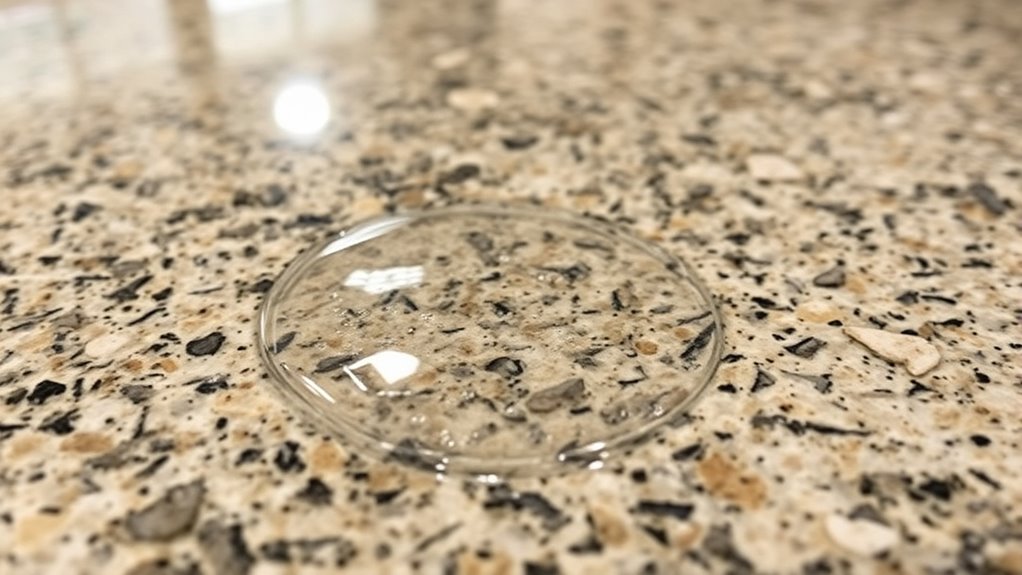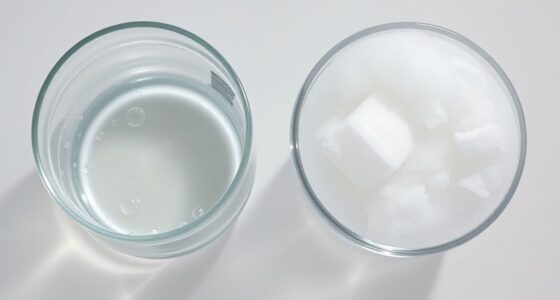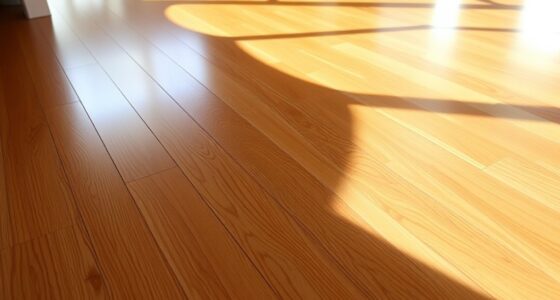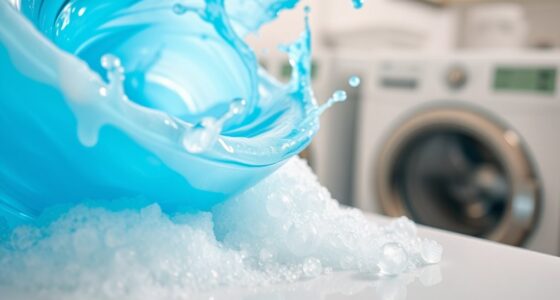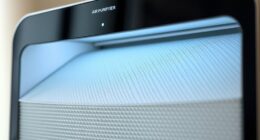To determine if you need a recoat of your granite sealer, perform a simple water test by placing drops of water on different spots of your countertop and letting them sit for about 10-15 minutes. If the water beads up and stays on the surface, your sealer is still doing its job. If it soaks in, darkens, or spreads out, it’s time for a reapplication. Keep going to learn more about how to get the best results.
Key Takeaways
- Conduct the water test regularly to check if water beads on the surface, indicating effective sealer.
- If water absorbs or darkens the granite, reapplication of sealer is likely needed.
- Water spreading or seeping into the stone suggests the sealer has diminished and needs recoating.
- Beading or droplets that remain after 10-15 minutes confirm the sealer is still effective.
- Regular testing helps prevent water damage, stains, and maintains the countertop’s appearance and longevity.
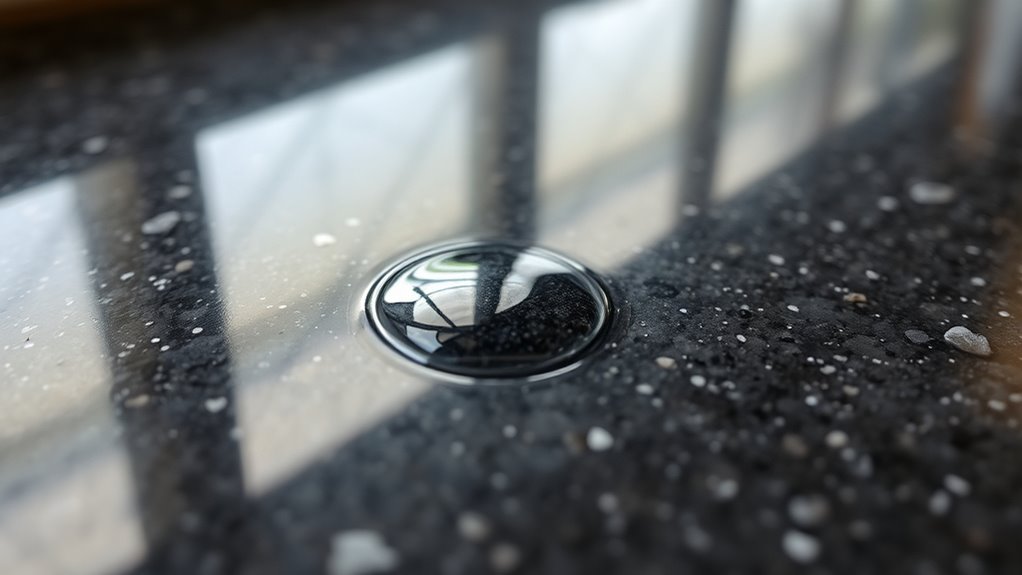
Performing a water test on your granite sealer is an easy way to check if your countertops are properly protected. This simple test can reveal whether your sealer is still effective or if it’s time to reapply. Over time, the sealer’s ability to repel water diminishes, which can lead to increased water absorption and, ultimately, damage to your granite. Monitoring sealer longevity is essential to maintaining the beauty and integrity of your countertops, especially since granite’s porous nature makes it vulnerable to stains and etching without proper sealing. Additionally, advancements in AI in materials analysis are beginning to influence how homeowners can assess and maintain their surfaces more precisely. To perform the test, start by placing a few drops of water in different areas of your countertop. Use a small, clean container or just dispense the water directly from a squeeze bottle. Allow the water to sit for about 10-15 minutes. If your sealer is still doing its job, the water should remain in droplets or beads on the surface, with minimal absorption. If, after this period, the water has soaked into the stone or spread out, it indicates that the sealer has worn down and water absorption is increasing. This absorption can accelerate staining or etching, especially if the water contains minerals or other substances. The key to understanding the results lies in observing how the water behaves. Beads and droplets signify that the sealer is still effective and providing a protective barrier. Conversely, if water begins to darken the granite or seeps into the stone, it’s a clear sign that the sealer’s protective layer has diminished. In that case, a recoat is advisable to restore the countertop’s resistance to water and stains. Regular testing helps you avoid the surprise of staining or damage, especially if you notice that water no longer beads up as it used to.
Frequently Asked Questions
How Often Should I Perform the Water Test?
You should perform the water test every 6 to 12 months to assess sealer longevity. Testing frequency depends on your countertop’s usage and exposure to liquids; more frequent testing guarantees you catch when reapplication is needed. Simply sprinkle a few drops of water on the surface and see if it beads. If it soaks in, it’s time for a recoat to maintain protection and keep your granite looking its best.
Can the Sealer Be Reapplied if It Fails the Test?
Yes, you can reapply the sealer if it fails the water test. Think of it as giving your granite a superhero shield again—restoring its full protection and extending sealer longevity. The reapplication process is straightforward: clean the surface thoroughly, apply a fresh coat evenly, and let it cure. Regular re-sealing guarantees your granite remains resistant to stains and water damage, keeping it looking flawless for years to come.
Are There Different Tests for Different Granite Types?
You’ll find that different granite types, due to their varying porosity, may require different test methods to assess sealer effectiveness. For example, more porous granites may need a more sensitive water test, while less porous ones might need a different approach. By understanding your granite porosity, you can choose the appropriate test methods to determine if your sealer is working properly or if it needs reapplication.
Does a Successful Water Test Mean the Sealer Is Permanent?
A successful water test doesn’t mean your sealer is permanent; in fact, studies show sealers often last between 1-3 years. While the water test’s reliability is high for initial assessment, it doesn’t guarantee long-term sealer longevity. You should reapply or recoat your sealer periodically, especially if water absorption occurs later. Regular testing guarantees your granite remains protected, and you avoid costly resealing surprises.
What Are Signs That My Granite Needs Resealing Besides the Water Test?
If your granite shows surface discoloration or stains that won’t come out despite cleaning, it’s a sign you need to reseal. You might notice darker spots that seem to absorb liquids quickly or stains that persist even after cleaning. These issues indicate the sealer is wearing down, allowing moisture and stains to penetrate. Resealing helps protect your surface and keeps it looking its best.
Conclusion
Think of your granite as a trusty ship sailing smoothly across the waters. The water test is your lighthouse, guiding you through fog and storm. If the water beads like dew, your ship’s hull is still sealed tight. But if it soaks in, it’s time to reinforce the voyage. Regular re-sealing keeps your surface resilient, just like a lighthouse keeps ships safe. Stay vigilant, and your granite will continue to shine bright, season after season.
